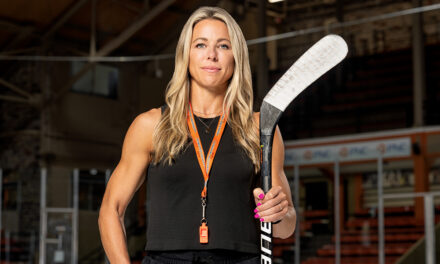Maybe there was a time when money was simple, before credit cards were equipped with microchips and private college tuition averaged more than $31,000. But today, whether you’re financially flush or struggling to make ends meet, the complexity of managing wealth, buying a home, saving for college and retirement, and investing seems to grow exponentially year after year. Understanding the tax codes and health care plans alone can require a significant investment of time and energy.
In an effort to help you establish a sound plan for your financial health, Real Woman consulted Michael A. Cano, founder and principal of Cano Wealth Strategies LLC, in Hightstown, N.J. He boiled money management down to seven key areas, which, if you get them right, should lead you to solid ground and help you maintain steady financial wellbeing.
Build the Foundation.
A road map showing where you bring in and spend your money, known as a cash-flow statement, serves as the foundation of managing wealth and helps people get a handle on their revenue and prioritize their expenses, Cano says. “You might find some things that you really don’t need, like Starbucks twice a week, versus some things that you really do need, such as putting away more in your retirement or saving more for a child’s college education.”
Tip: To determine revenue, review the tax returns from the previous year. For expenses, go through the checkbook and credit card statements.
Be Realistic.
Once people develop a cash-flow statement and know where their money goes, establishing a budget comes next, Cano says. People should anticipate fixed costs (mortgage, car payment, utility bills) as well as occasional expenses (birthdays, going out to eat, vacations).
Tip: People often aren’t conservative enough with the numbers—mainly, because they forget what they spend their money on, Cano says. An accurate cash-flow statement will lead to a better budget.
Focus on the Future.
As a rule of thumb for a 401k, Cano recommends people in their 20s put away 10 percent of each paycheck, 15 percent for women in their 40s, and as much as they can in their 50s and older. “The maximum everyone can put away in 2015 is $18,000, but people 50 and older can do a ‘catch-up’ amount, which is an additional $6,000,” he says. “If you haven’t been saving for the long run, you have to make up for a shorter period of time with more money.”
Tip: The best time to invest is during a down market, as share prices come at a discount. However, timing the market can be tricky, so just “get into a habit and stick with the program,” Cano says. “It’s never a good time not to do it.” Bonus Tip: Regularly meet with the plan advisers to discuss the retirement account. Otherwise, unattended funds could remain flat or lose money for years.
The Right Mix.
Most of Cano’s clients have a mix of 60 percent stocks (more aggressive) and 40 percent bonds (more conservative).
Tip: The closer people get to retirement, the less they can afford a big downturn in their portfolio, he says. “You want to be more conservative when you’re older because you don’t want to wait several years for the portfolio to come back up versus a shorter period if you were more conservative during that time.”
Know the Score.
Every year or two people should check their credit score. The better the score, the better the rate, and that will make a huge difference for large purchases, such as a car loan.
Tip: “Live within your means,” Cano urges. “Just because you’re getting that big bonus next quarter, it doesn’t mean you need to spend that money.” He recommends putting at least 25 percent of that amount away or using it to keep credit card bills in check.
Healthy Aging.
Long-term care insurance is often overlooked but vitally important, especially as people age, Cano says. Unlike traditional health insurance, long-term care insurance is designed to cover long-term services and support, including personal and custodial care.
Tip: People should consider a high-deductible health insurance plan. It allows you to take advantage of setting up a health savings account (HSA) to cover copayments, deductibles, some drugs, and other health care costs, Cano says. The benefit: Money put into an HSA isn’t taxed.
Home Sweet (Affordable) Home.
Be reasonable when purchasing a house. Cano has visited many people in huge, beautiful—yet empty—homes. “They can afford the house but not to furnish it,” he says.
Tip: Again, people should investigate their credit score before going to the bank and applying, he notes. “This will give you a good idea on whether you will get a favorable loan or not, and then, you can set your expectations.”









